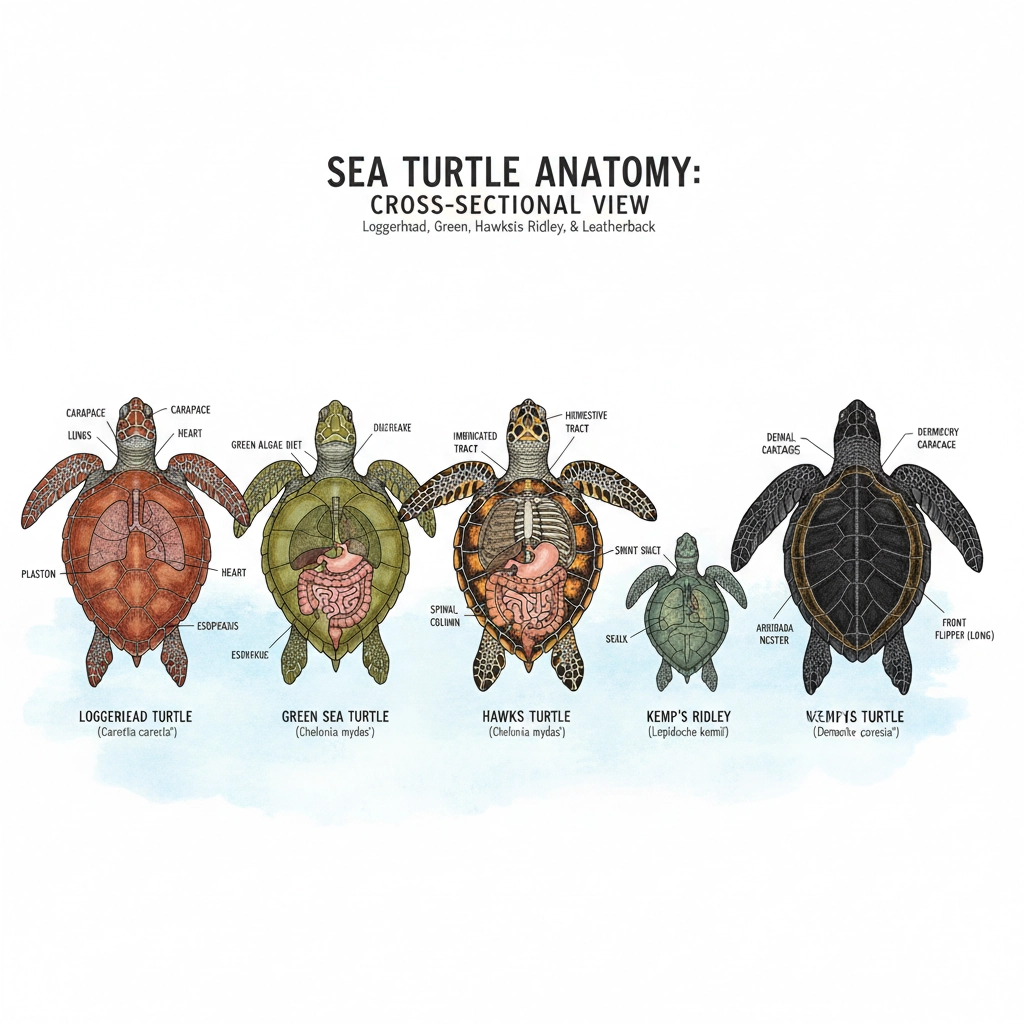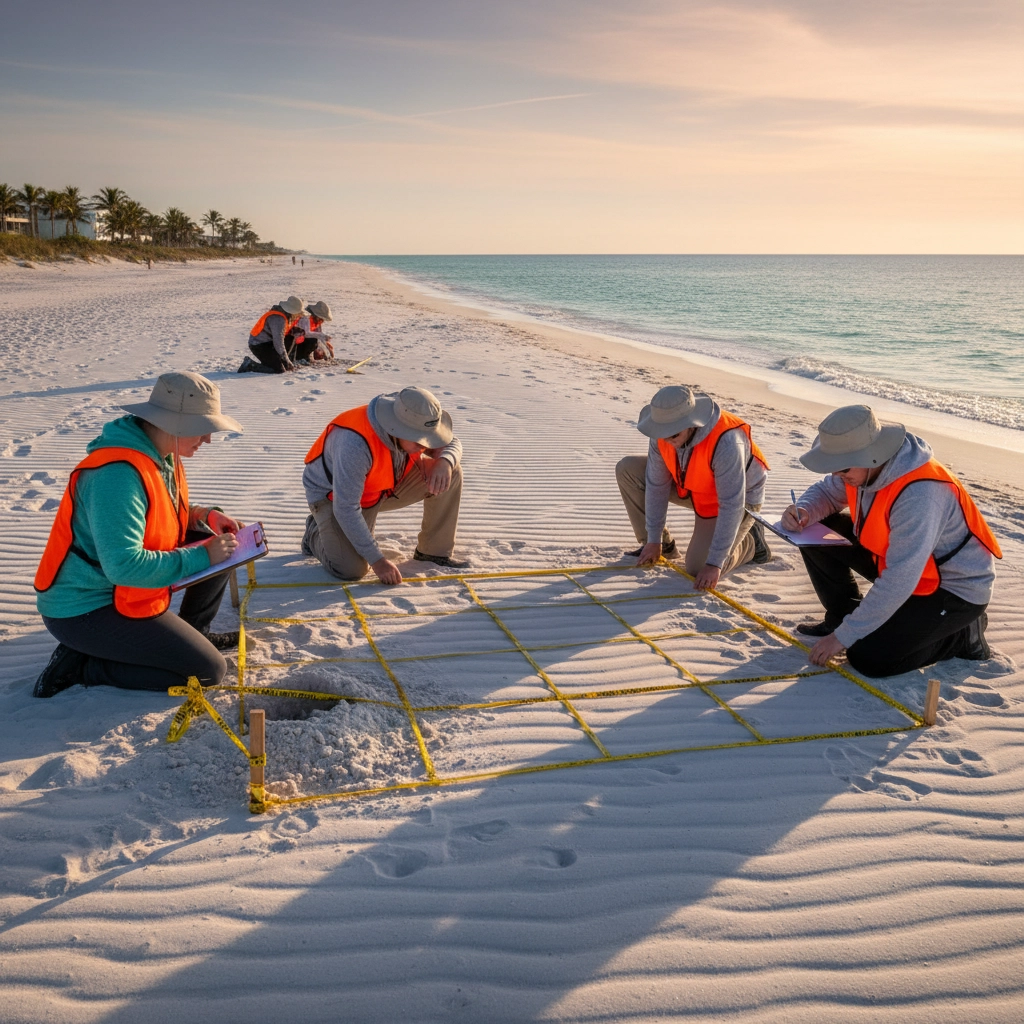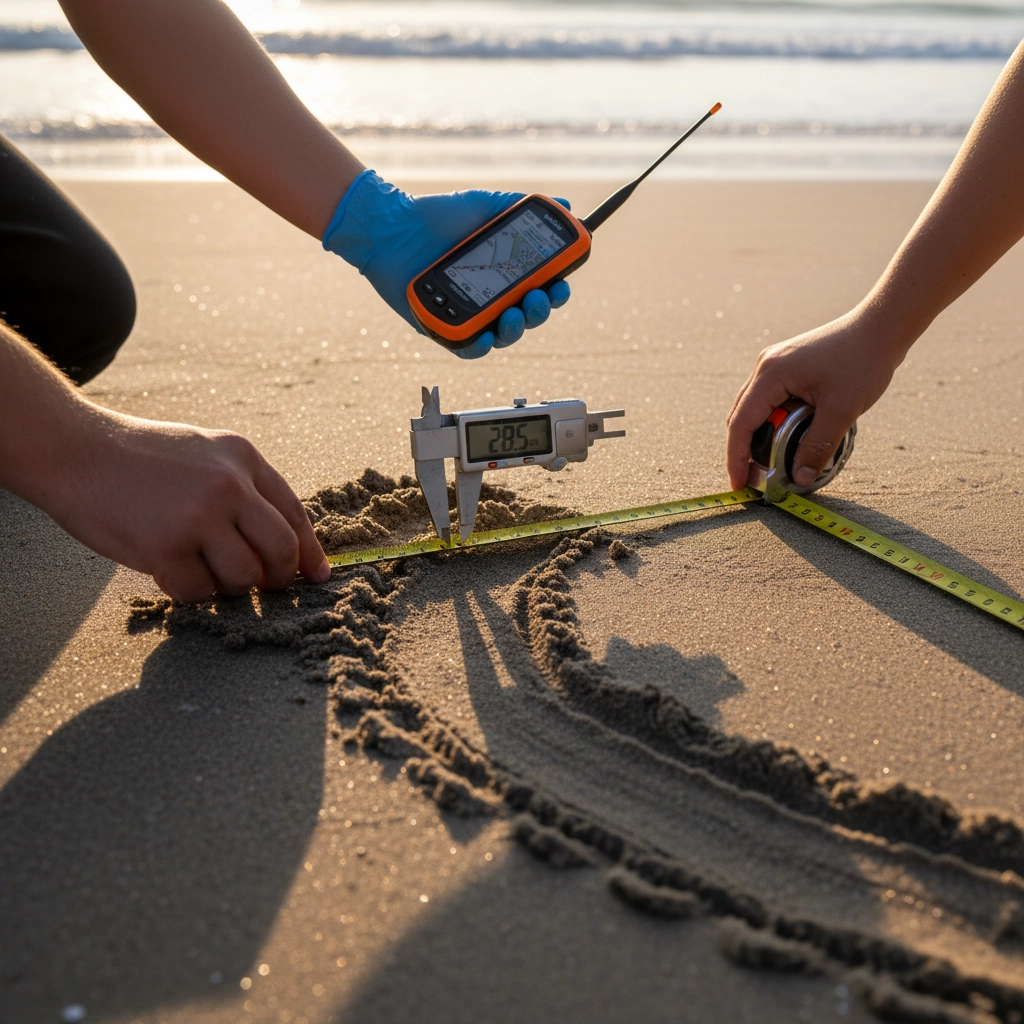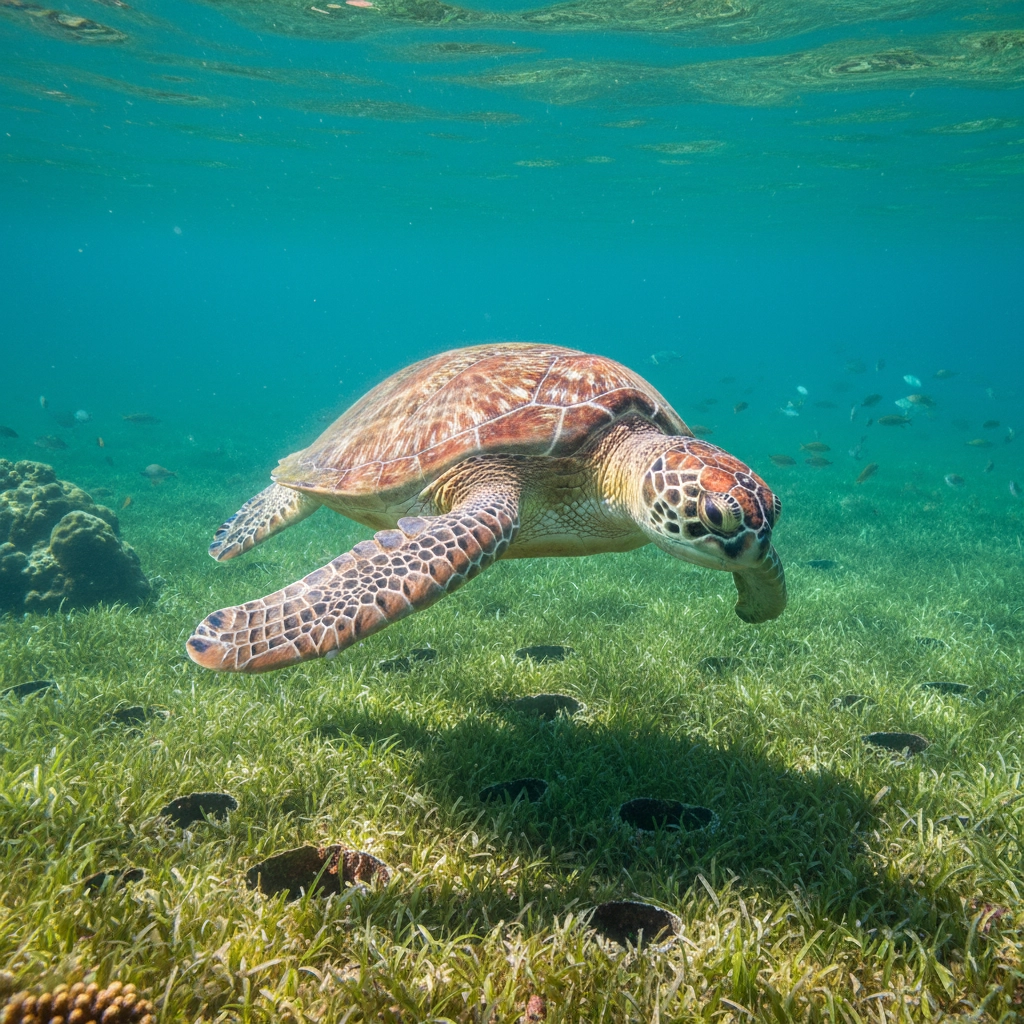Struggling For Student Engagement? 50+ Hands-On Sea Turtle Research Activities for Your Next Emerald Coast Trip
- Caleb Mullenix
- 19 hours ago
- 6 min read
Engaging students in marine science requires more than textbook learning: it demands immersive, hands-on experiences that transform abstract concepts into tangible discoveries. The Emerald Coast provides an exceptional laboratory for sea turtle research, offering educators access to nesting beaches, conservation programs, and research opportunities that captivate student interest while building essential scientific skills.
Preparing your students for meaningful sea turtle research involves careful planning and structured activities that span pre-trip preparation, field experiences, and post-trip analysis. The following comprehensive collection of research activities ensures maximum educational impact while maintaining student safety and engagement throughout your expedition.
Pre-Trip Research Foundation Activities
Begin by establishing essential knowledge through structured classroom preparation. These foundational activities prepare students for field observations and create context for their Emerald Coast experience.
Species Research and Comparison Studies
Assign each student group a specific sea turtle species found in Emerald Coast waters: loggerhead, green, hawksbill, Kemp's ridley, or leatherback turtles. Students research and document species-specific characteristics including size ranges, dietary preferences, habitat requirements, migration patterns, and reproductive behaviors. Create a collaborative comparison chart where groups present findings and identify key differences between species.
Develop species identification cards featuring distinguishing characteristics, shell patterns, and behavioral traits. Students practice identification skills using photographs and videos before encountering live specimens or tracks on the beach.
Life Cycle Investigation Projects
Students construct detailed life cycle diagrams tracking sea turtle development from egg to adult. Include specific timeframes, survival rates at each stage, and environmental factors affecting development. This foundation proves essential for understanding field observations during nesting season activities.

Threat Assessment Research
Research current threats facing sea turtle populations including plastic pollution, coastal development, artificial lighting, climate change, and fishing gear entanglement. Students create threat mitigation proposals and conservation strategy presentations, establishing the importance of their upcoming field research.
Field Data Collection Activities
Transform beach visits into systematic research opportunities through structured data collection protocols that engage students in authentic scientific processes.
Nest Monitoring and Documentation
Establish systematic protocols for nest site documentation. Students measure nest locations relative to vegetation lines, record sand temperature readings, document clutch sizes when observing excavations, and track incubation periods. Maintain detailed data sheets for each nest encounter.
Create standardized measurement techniques for nest depth, diameter, and distance from high tide lines. Students practice using measuring tools and recording precise observations that contribute to broader conservation databases.
Track Analysis and Identification
Teach students to identify sea turtle tracks based on width measurements, flipper patterns, and crawl characteristics. Practice distinguishing between species tracks, measuring track dimensions, and documenting approach and return paths. Students sketch track patterns and note environmental conditions affecting track preservation.
Beach Profile Analysis
Students conduct systematic beach surveys measuring slope angles, sand composition, vegetation boundaries, and human impact indicators. These measurements help identify optimal nesting habitat characteristics and potential threats to nesting success.
Hands-On Conservation Activities
Engage students in active conservation work that demonstrates practical applications of scientific research while contributing to sea turtle protection efforts.
Beach Cleanup Data Collection
Transform beach cleanups into research opportunities by categorizing debris types, recording quantities and locations, and analyzing pollution sources. Students identify items particularly dangerous to sea turtles and document their findings for presentation to local conservation organizations.
Students weigh collected debris, measure plastic fragment sizes, and create visual displays showing pollution impact on marine ecosystems. This data collection reinforces the connection between human activities and sea turtle survival.

Light Pollution Assessment
Conduct nighttime surveys measuring artificial light intensity along nesting beaches. Students use light meters to document brightness levels, identify problematic light sources, and map areas requiring light ordinance enforcement. This activity demonstrates how human development affects sea turtle nesting behavior.
Dune Restoration Participation
Engage students in hands-on dune restoration projects including native plant installation, erosion barrier construction, and invasive species removal. Students measure vegetation growth rates, document survival percentages, and assess habitat improvement over time.
STEM Integration Activities
Incorporate technology, engineering, and mathematical analysis to enhance scientific understanding and develop comprehensive research skills.
GPS and Satellite Tracking Analysis
Students analyze real satellite tracking data from tagged sea turtles using online databases. Plot migration routes, calculate travel distances and speeds, identify feeding areas, and compare movement patterns between species and seasons. This technology integration demonstrates modern conservation research methods.
Temperature and Climate Data Analysis
Collect sand temperature measurements at various depths and locations throughout nesting beaches. Students graph temperature variations, predict sex ratios based on incubation temperatures, and analyze climate change impacts on reproductive success.
Students use data loggers to record continuous temperature measurements and create comprehensive datasets for analysis. Compare findings with historical data to identify long-term trends.
Engineering Solutions Development
Challenge students to design and test solutions for common sea turtle conservation problems. Create turtle-safe fishing gear prototypes, design nest protection cages, develop lighting systems that minimize beach disruption, and construct erosion prevention structures.

Behavioral Observation Protocols
Develop systematic approaches for observing and documenting sea turtle behaviors during various activities throughout the expedition.
Nesting Behavior Documentation
When permitted and under proper supervision, students observe nesting behaviors from appropriate distances. Document timing of different nesting phases, body positioning during digging, covering behaviors, and return-to-sea patterns. Maintain detailed observation logs with precise timing notations.
Feeding Behavior Analysis
Students observe and document feeding behaviors in shallow water areas, recording prey preferences, feeding techniques, and social interactions. Use underwater viewing equipment when available to observe natural behaviors without disturbance.
Hatchling Emergence Studies
During hatchling emergence events, students document timing, group emergence patterns, disorientation incidents, and predation attempts. Record environmental conditions affecting emergence success and document conservation intervention effectiveness.
Water Quality and Habitat Assessment
Expand research scope through comprehensive habitat evaluation activities that demonstrate ecosystem connectivity and environmental health indicators.
Seagrass Bed Surveys
Students assess seagrass bed health in sea turtle feeding areas by measuring coverage percentages, identifying species composition, documenting grazing evidence, and recording human impact indicators. This activity demonstrates the connection between habitat quality and sea turtle populations.
Water Chemistry Testing
Conduct systematic water quality assessments including temperature, salinity, dissolved oxygen, pH, and turbidity measurements. Students compare readings between different locations and analyze relationships between water quality and sea turtle presence.

Technology-Enhanced Learning Activities
Incorporate modern technology tools to enhance data collection capabilities and expand research opportunities beyond traditional field methods.
Drone Survey Operations
When regulations permit and proper certifications are available, use drones to conduct aerial surveys of nesting beaches, document nest site characteristics from aerial perspectives, and monitor human disturbance patterns. Students analyze aerial footage to identify optimal nesting habitat features.
Underwater Camera Deployments
Deploy underwater cameras in shallow feeding areas to document natural sea turtle behaviors without human presence. Students review footage to identify species, document feeding preferences, and analyze social interactions.
Mobile Data Collection Apps
Utilize specialized mobile applications designed for sea turtle research data collection. Students input observations directly into research databases, contributing to broader scientific studies while learning proper data management techniques.
Safety and Emergency Preparedness
Ensuring student safety during sea turtle research activities requires comprehensive planning and emergency preparedness protocols that address unique coastal and marine environment risks.
Establish clear protocols for beach research activities including buddy system requirements, communication procedures, emergency contact information, and weather monitoring responsibilities. Provide students with waterproof emergency contact cards and ensure all activities include proper adult supervision ratios.
Create detailed emergency action plans for various scenarios including severe weather, marine life encounters, water emergencies, and medical situations. Conduct safety briefings before each field activity and ensure students understand proper procedures for all research protocols.

Post-Trip Analysis and Presentation
Extend learning opportunities through comprehensive analysis of collected data and presentation of research findings to broader audiences.
Data Analysis Projects
Students compile and analyze collected data using statistical software to identify patterns, trends, and correlations. Create visual presentations including graphs, charts, and maps that effectively communicate research findings to diverse audiences.
Scientific Report Writing
Guide students through proper scientific writing protocols including abstract composition, methodology descriptions, results presentations, and conclusion development. These reports serve as authentic assessments of student learning and research skill development.
Community Presentation Opportunities
Arrange presentations to local conservation organizations, school boards, and community groups where students share research findings and conservation recommendations. These presentations reinforce learning while developing public speaking and science communication skills.
Transform your students' understanding of marine conservation through immersive sea turtle research on the Emerald Coast. Appleseed Expeditions provides comprehensive educational travel experiences that combine rigorous scientific research with unforgettable learning adventures, ensuring your students develop lasting connections to marine science and conservation stewardship.



Comments